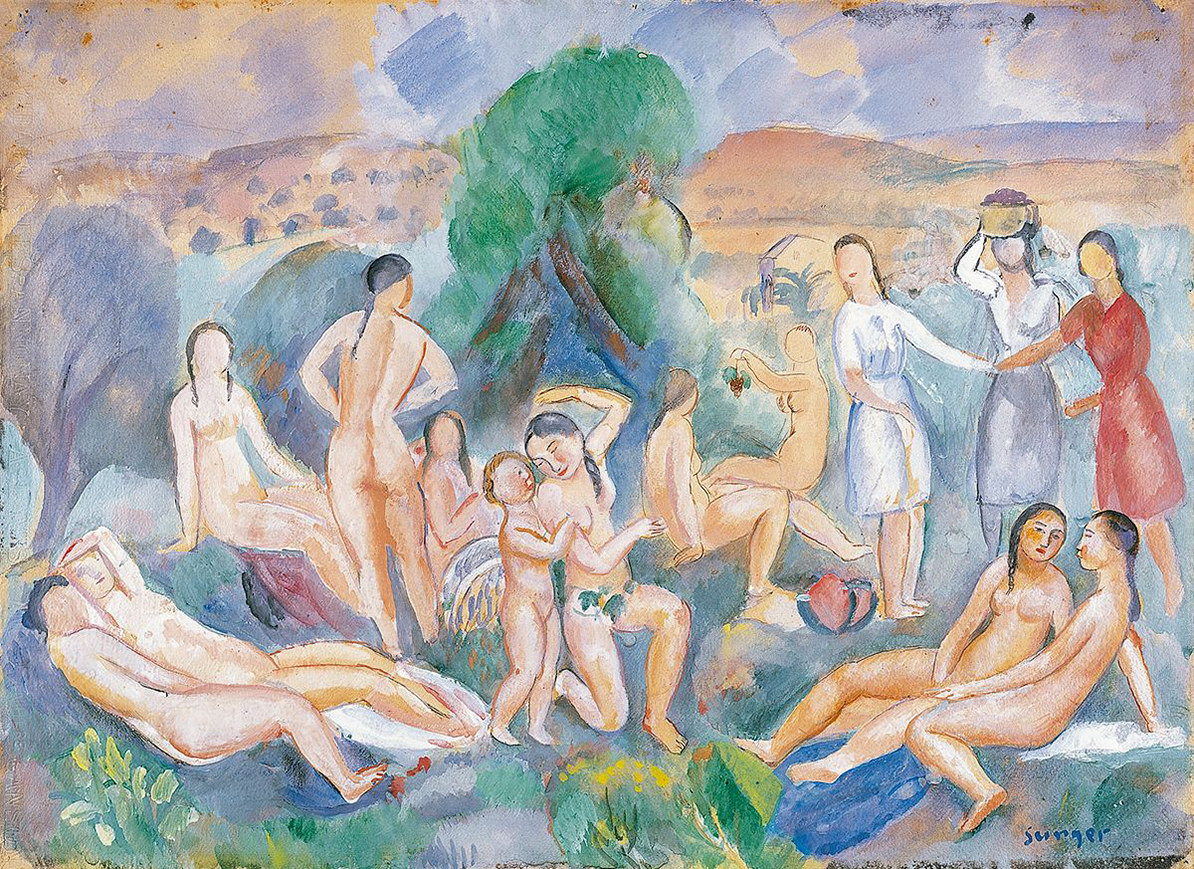Greek classicism in Sunyer’s work
The Catalan painter’s work is one of the greatest exponents of the Noucentisme movement

Joaquín Sunyer
Pastoral, 1918
© VEGAP, Madrid, 2020
© Fundación MAPFRE Collections
The work of Joaquín Sunyer is among the most representative of the Noucentisme aesthetic that was promoted from 1906 in La Veu de Catalunya by Eugenio d’Ors. Winckelmann had already spoken of something similar, of a Greece in which one could live happily. A place of beautiful naked bodies, of fruit that could be effortlessly plucked from the trees, a place of light, sun and water.
Greek primitivism and classicism were modes of creation that were revisited by the Catalan Noucentisme movement – an invention, if you like, but not a lie or a deception. They respond to the deepest wishes and desires of human beings: union with Nature, happiness. While Matisse gave it a name, Le bonheur de vivre (Joy of Life, 1906), Sunyer was not far behind him with Mediterranean and Pastoral, two paintings dating from 1910-1911, which would become recurring themes in his work from then on. The Catalan artist transformed what could have been an anecdote in the assertion of a legend that was soon to become a convention: the woman occupies the center of the composition, woman and landscape melding as one. It thus responds to what had become a tradition: the identification of woman with nature.
As you set out for Ithaka
hope your road is a long one,
full of adventure, full of discovery.
Laestrygonians, Cyclops,
angry Poseidon – do not fear them:
you’ll never find things like that on your way
as long as you keep your thoughts raised high
as long as a rare excitement
stirs your spirit and your body.
Laestrygonians, Cyclops, wild Poseidon –
you won’t encounter them
unless your soul sets them up in front of you.
Hope your road is a long one.
May there be many summer mornings when,
with what pleasure, what joy,
you enter harbors you’re seeing for the first time;
May you stop at Phoenician trading stations
to buy fine things,
mother of pearl and coral, amber and ebony,
sensual perfume of every kind –
as many sensual perfumes as you can;
and may you visit many Egyptian cities
to learn and go on learning from their scholars.
Keep Ithaka always in your mind.
Arriving there is what you’re destined for.
But don’t hurry the journey at all.
Better if it lasts for years,
so you’re old by the time you reach the island,
wealthy with all you’ve gained on the way,
not expecting Ithaka to make you rich.
Ithaka gave you the marvelous journey.
Without her you wouldn’t have set out.
She has nothing left to give you now.
And if you find her poor, Ithaka won’t have fooled you.
Wise as you will have become, so full of experience,
you’ll have understood by then what these Ithakas mean.
Ithaka, ca. 1907. C. P. Cavafy
Leyre Bozal, Curator, Fundación MAPFRE Collections.
